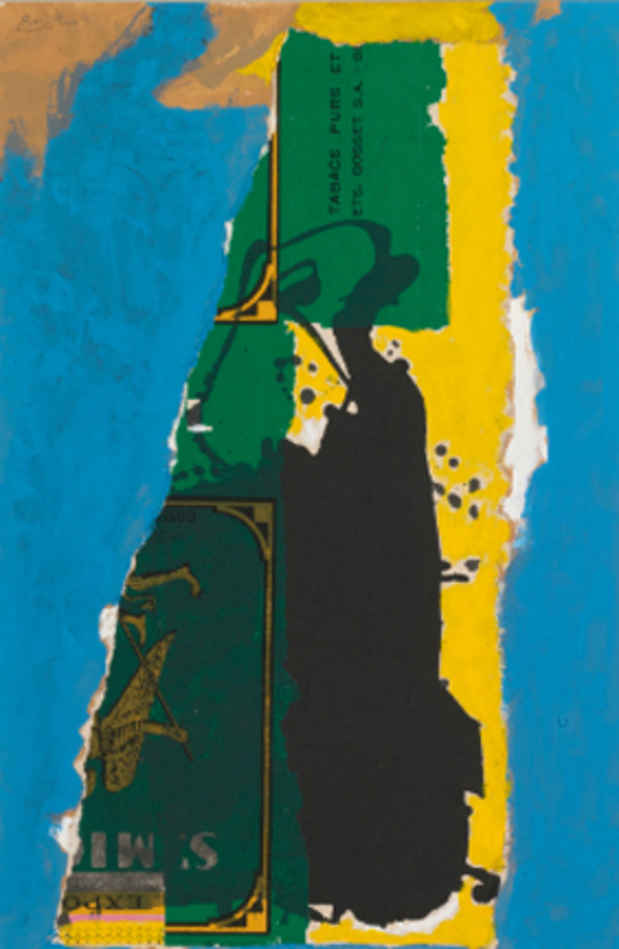Robert Motherwell “Collage, Part II”
Bernard Jacobson Gallery

This event has ended.
Bernard Jacobson Gallery presents Robert Motherwell: Collage, Part II opening at our New York location. This exhibition continues the gallery’s exploration of Robert Motherwell’s commitment to the medium of collage, spanning decades of work from the sixties through the eighties.
In 1943 three young American painters, Jackson Pollock, William Baziotes and Robert Motherwell, were approached by Peggy Guggenheim and asked to produce work for the first exhibition of collages in the United States, at her Art of This Century gallery in New York. Motherwell was only in his twenties - the youngest of the three painters - but his powerful new experiments were exhibited alongside the great European modernists including Picasso, Ernst, Miro, Braque, and Arp. As he recounts, “Pollock and I didn’t really know much about collage except that you pasted things on. We were both intimidated by the project, so we decided to try it together.” Pollock and Baziotes soon abandoned the form, but Motherwell discovered a passion and aptitude for the medium which spurred him to continue with it throughout his career. As he says, “I felt a magical release. I took to it, as they say, as a duck to water.”
Motherwell’s major innovation with the form is the torn paper edge - a technique that reflected his love of working with paper, and his commitment to automatism. Further, he worked on a much larger scale than his European counterparts had attempted, and Americanized the medium to reflect his views that “in Europe… people take it much more for granted that certain things are for certain people. But in America, people believe everything is for everyone, including abstract art.” To this end, Motherwell believed collage to be “a necessary invention”, in which “one has the whole world and human history as subject matter, juxtaposition inconceivable before modern times.”
This exhibition at Bernard Jacobson Gallery, New York presents a selection of original collages. In his 1960s collages, Motherwell incorporated “everyday” fragments, echoing Schwitters’ merz technique developed 40 years earlier. In The Brown Stripe (1967), for example, the artist included torn pages from a help wanted advertisement section.
In the 1970s and 80s, Motherwell developed entire series of collages. The collage elements in these later works were often cut and torn fragments of proofs of his own prints that he embellished with gestural brushstrokes and painted compositions, and are demonstrative of his work with the torn edge. This technique of incorporating print fragments occurs in St. Michel Collage with Blue (1985), in which the artist incorporated a fragment of a 1979 lithograph and screen print entitled St. Michael III.
Music compositions were another important collage element for Motherwell and appear in two works in the exhibition. He incorporated elements from his close friend Arthur Berger’s composition “Trio for Guitar, Violin and Piano” (1972) into The Red and Black No. 1 (1987-1988). In Berger’s later works from the seventies through the nineties, he reworked his earlier compositions in a process that he called “collages,” a term inspired by Motherwell.
Robert Motherwell continues the trajectory of modern European visionaries Picasso, Braque, Schwitters, and Matisse, and his advancements with American collage are unrivalled. As Robert Hughes suggests, in making collage Motherwell became “the only artist since Matisse in the fifties to alter significantly the syntax of this quintessentially modernist medium.”
[Image: Robert Motherwell “St. Michel Collage with Blue” (1985)]
Media
Schedule
from January 17, 2014 to February 25, 2014